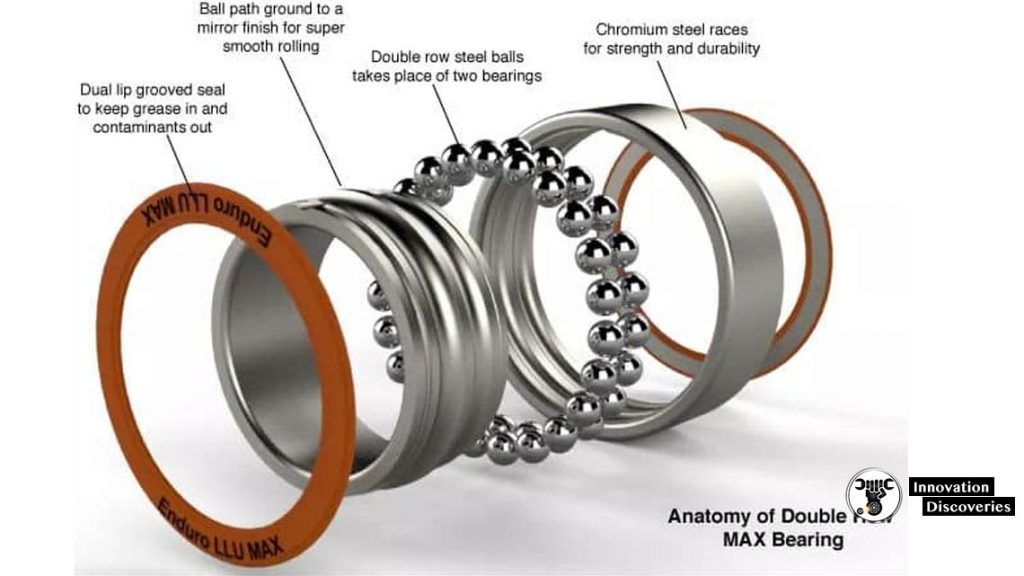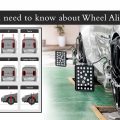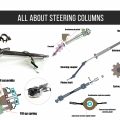
What is Bearing?
A bearing is a mechanical element which allows motion between two rotating parts, with minimum friction.
An example of such rotating parts is shaft and its housing.
Function of bearing
A good bearing is expected to do following functions.
- It should ensure free rotation with minimum friction
- It should support rotating parts and maintain them in correct position
- Bearing should transmit the forces acting on rotating parts to the frame of the machine
Classification of Bearings
There are several bases for classification of bearings, we will discuss all of them one by one.
Depending on the direction of force
- Radial bearing
- Axial bearing
Depending on the type of friction
- Sliding contact bearing
- Roller contact bearing
Sliding contact bearing
Sliding contact bearings are also known as sleeve bearings, journal bearings or plain bearings.
In this type of bearing surface of shaft slides over the surface of bush which results in wear and friction.
To reduce the friction rotating surfaces are separated by a film of lubricating oil.
The bush is made of special material like bronze or white metal.
Applications of sliding contact bearings
- Concrete mixtures, rope conveyors and marine installations
- Steam and gas turbines
- Large size electric motors
- Centrifugal pumps
- Crankshaft bearings in petrol and diesel engines
Types of sliding contact bearings
On the basis of type of lubrication applied in sliding contact bearings, they can be classified into two types.
- Hydrodynamic lubrication bearings
- Hydro-static lubrication bearings
Rolling contact bearing
Rolling contact bearings are also known as anti-friction bearings or simply ball bearings.
That like balls or rollers are introduced between rotating surfaces to reduce the friction.
In this type of bearing sliding contacts are replaced by rolling contacts.
Functions of rolling contact bearings
- Rope shaves, crane hooks and hoisting drums
- Small size electric motors
- Gear boxes
- Front and rear axles of automobiles
- Machine tool spindles
Types of rolling contact bearings
On the basis of load and use requirements, ball bearings can be classified in following types.
- Deep groove ball bearing
- Cylindrical roller ball bearing
- Angular contact bearings
- Self-aligning bearings
- Spherical roller bearing
- Taper roller bearing
- Thrust ball bearing
Selection of bearing type
To select a proper bearing for our application is a very important thing. Here is a quick guide for selecting right bearing.
- For low and medium loads select ball bearing, and for heavy load select roller bearings.
- In case of misalignment between shafts self-aligning ball bearings or roller bearings are used.
- Medium thrust load radial thrust bearings are selected and for heavy thrust loads cylindrical thrust bearings are used.
- For situations where we have both axial and radial component of load we use deep groove ball bearing, angular contact bearing and spherical roller bearing
- High speed applications deep groove ball bearings, angular contact bearings and cylindrical roller bearings are recommended
- When rigidity of the system is our main requirement like in machine tools we use double row cylindrical roller bearing or taper roller bearing
- When noise reduction is our main criteria we use deep groove ball bearing
Static load carrying capacity
Before determining static load carrying capacity of a ball bearing, let us first understand what a static load is.
Static load is defined as the load acting on a bearing when the shaft is stationary.
The static load carrying capacity of a shaft is defined as the static load which corresponds to a total permanent deformation of balls and races, at the most heavily stressed point of contact, equal to 0.0001 of the ball diameter.
Dynamic load carrying capacity
The dynamic load carrying capacity of a bearing is defined as the radial load in radial bearing (or thrust load in the thrust bearing) that can be carried for a minimum life of one million revolution.
Needle bearings
Needle bearings are the cylindrical roller bearings with very small diameter compared to the length of roller. They are also known as Quill bearings.
The length to diameter ratio of a needle bearing is more than four.
Advantages of needle bearings
- They can be used to replace sleeve bearings
- They are compact and lightweight
- Compared to their size they have large load carrying capacity
- They have large load carrying capacity particularly at low speeds
Bearing failures
There are two basic types of bearing failure.
- Breakage of parts
- Surface destruction
The breakage of parts happens due to misalignment or overload. This type of bearing failure can be easily avoided by selecting correct bearing.
Surface destruction of bearings can be further classified into following.
- Abrasive wear
- Corrosive wear
- Pitting
- Scoring
Guidelines for lubricating ball bearing
We need to lubricate ball bearing from time to time, for smooth movement of balls. To find suitable lubrication for your application, here is a quick guide.
- When temperature is less than 100-degree Celsius grease is suitable. For temperature above 100-degree Celsius oil is suitable.
- Grease is suitable for low and moderate loads and for heavy loads oil is suitable.
- In case we already have a central lubrication system present in the machine, we can use same for bearing. No need for any extra lubrication system for bearings.
- When the product of bore (in mm) * speed (rpm) is below 200000, grease is suitable, for higher values oils are suitable.
All about tires, what is the meaning of numbers on the Tyre? What is inside the Tyre?






4 Comments